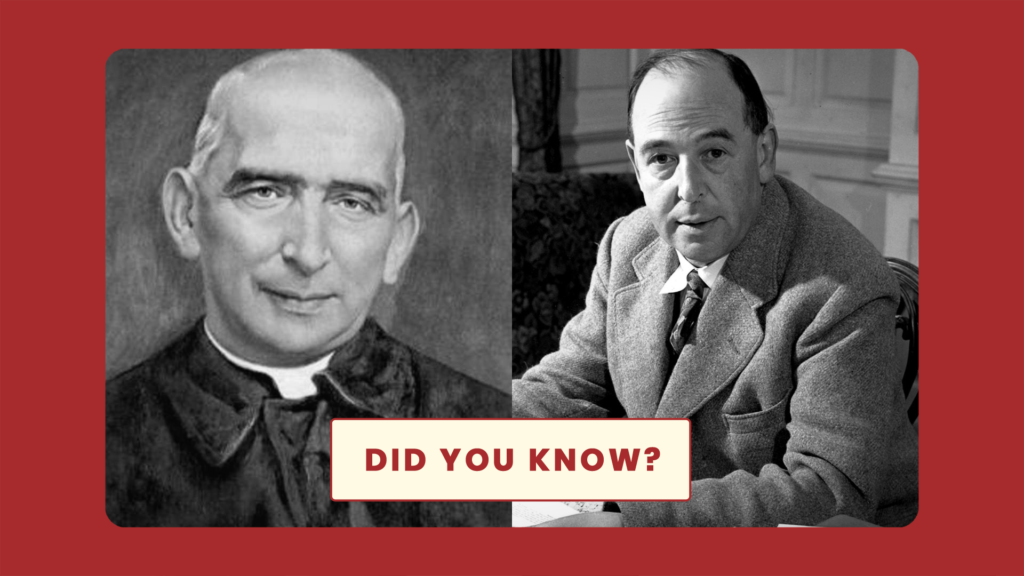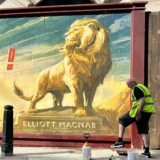C.S. Lewis Exchanged Letters With a Catholic Saint

Look for “Did you know” articles on NarniaWeb on the first of every month.
After reading Le lettere di Berlicche, the Italian translation of C.S. Lewis’ The Screwtape Letters, Don Giovanni Calabria decided to write to Lewis. Fr. Calabria wrote the letter in Latin because he did not know any English. This was the beginning of a long correspondence between the two that lasted until Fr. Calabria’s death in 1954. Fr. Luigi Pedrollo then wrote to Lewis about Fr. Calabria’s death, and he and Lewis continued to write to each other until Lewis died in 1963.
The letters that still existed were later translated and edited into one volume, The Latin Letters of C.S. Lewis by Martin Moynihan.
Many of the letters cover theological concepts such as petitionary prayer and Christian unity. There is also mention of current events, and entreaties to pray for one another.
There is no direct mention of Narnia, but Lewis did send “a tale recently translated into Italian in which, frankly, I have played rather than worked.”
I do not know whether you will like this kind of trifle. But if you do not, perhaps some boy or girl will like it among your “good children.”
Letter 15 in “The Latin Letters of C.S. Lewis”
Fr. Calabria was the founder of the Poor Servants of Divine Providence and the Poor Sisters of Divine Providence. He was canonized as a saint by Pope John Paul II in 1999.






While Lewis keeping in touch with someone religious is not all surprising, doing so in another language certainly is! Was education on the Italian language common in English schools in those days, or did he have some kind of translator?
From what I read above, it sounds like they exchanged letters exclusively in Latin. Italian is based on Latin, but not the same language. I’m guessing Lewis’ book (possibly a Narnian one) was translated in Italian officially for publication in Italy, and then Lewis sent a copy to Fr. Calabria, who would have also known Italian in addition to Latin. I did not know this C.S. Lewis trivia before. Very interesting!
The letters were all in Latin. However, Letter 13 in the publication does indicate Lewis knew some Italian. A letter was sent to Lewis in Italian, but because of his eyesight and limited Italian he couldn’t read the handwriting. So he sent it to Fr. Calabria, asked him to get in touch with the writer, and said “If he will write in English or Latin, or if in Italian he will use a typewriter, communication between us will be possible.”
That’s pretty amazing that two people who aren’t fluent in each other’s languages could use a basically dead language to communicate complex ideas. I wish I had more time to work on other languages but my classes have me swamped. My previous college didn’t offer Italian so I took Spanish for a bit but now am really out of practice:(
According to Wikipedia, don is also a suffix that can mean tooth, which sounds a little more battle-ready than nose. I was looking at the Wikipedia page for Wagner’s Ring cycle yesterday because I know that Lewis was a huge fan of it, and saw something that might be related to this topic: the first drama in that cycle is called Das Rheingold, translated as The Rhinegold, which refers to the gold stolen from water-sprites in the river Rhine and used to fashion the eponymous ring. It seems like there might be a bit of a link there. As an aside, Lewis seemed to like names starting with Rh: we also see the characters Rhince and Rhoop in VDT.
The starting point of writing a good essay is thought. This is because writing is actually clarified, organized and sharpened thought captured on paper. Start by researching into the topic aiming to familiarize yourself with the topic. Make use of the internet, your school or local library and academic databases. Take down notes or save relevant portions of the document for your further study.